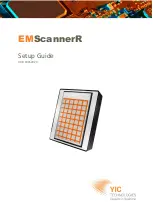
7 Device De
s
cription
Instruction Manual Myopia Master® (G/68100/EN Rev04 0820)
15 / 92
7.2
Mode of Operation of the Myopia Ma
s
ter®
The Myopia Master® combines different measuring functions in one unit.
Auto-Refractometer
An infrared light source projects measuring light onto the retina of the
eye from where it is reflected back to the shutter location. Sensitive
sensor chips, or CCD cameras now register the deviation of the reflected
light from the shutter location. The deviation depends on the ametropia.
From that, an integrated microcomputer calculates the ametropia in D,
based on the sphere, cylinder and cylinder axis position.
Keratometer
To determine the curvature of the cornea, a reflected image of the cornea
is captured by a camera sensor and is measured.
The reflection of test marks and of a ring is used as the reflected image.
This allows the central radii of the cornea to be determined.
Pachymeter (optional)
The pachymetry principle uses Scheimpflug images of the cornea, which
are analysed by a built-in computer.
600 Absolute data points are evaluated with the Scheimpflug images. The
measuring range lies on a 4 mm slit through the apex.
The slit light illuminates a sectional plane from the front surface of the
cornea to the back surface. The transparent cells of the cornea scatter the
slit light such that the sectional plane appears as if it were self-luminous.
This is captured at an angle of 45° through the pupil by a camera, whereby
the image plane of the camera is also tilted 45° to the optical axis of the
camera lens, in order to sharply focus the light-scattering cornea plane
onto the image plane of the camera (Scheimpflug image).
Due to this arrangement, sharp sectional images of the cornea can be
attained.
Axial length
The axial length of the eye is measured and displayed by interferometry.
The Myopia Master® measures six times the axial length of the patient‘s
eye.















































